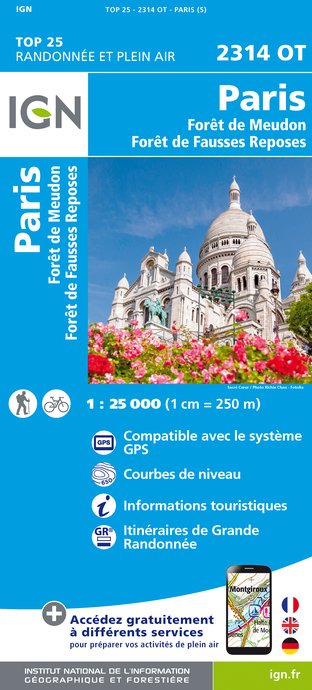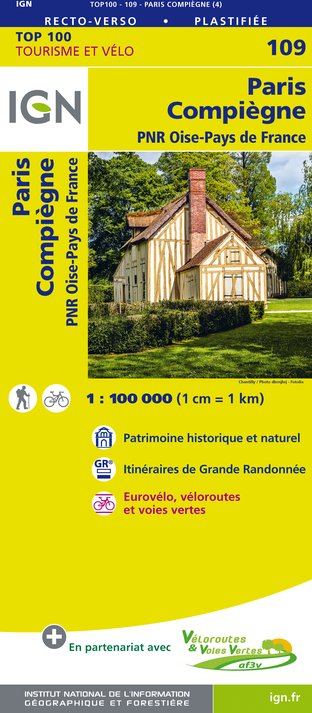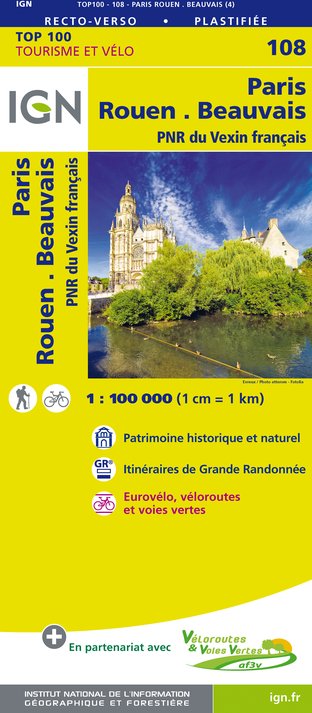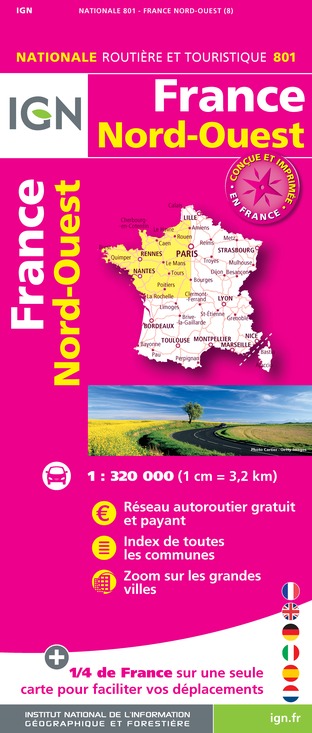Alerta
Alertas
Tipo de práctica
A pie
Muy fácil
2h
En bicicleta
Muy fácil
1h
Presentación
Mapa
Puntos de interés
Resumen de Cirkwi
Calificaciones y reseñas
Ver alrededor
Frescura y vuelta a los orígenes: las fuentes de París.

Crédito : Moonik via Wikipedia
El resumen de Cirkwi
Descubre París: Un recorrido por sus icónicas fuentes
Propuesto por Balades-Fluviales-An-Eala, este recorrido se trata menos de llegar a un destino y más de disfrutar del propio viaje: un paseo a través de la historia, guiado por las cautivadoras aguas de París. Imagínate caminando por las calles de París, cada giro revelando historias de épocas pasadas, con el suave murmullo del agua como compañía. El objetivo no es solo exhibir el encanto estético e histórico de cada fuente, sino sumergirte en la atmósfera que crean: un oasis de calma y belleza en medio del bullicio de la ciudad. Deja que estas aguas susurren sus historias, desde maravillas monumentales hasta joyas escondidas, enriqueciendo tu caminata con capas de historia y cultura parisina.
Información técnica sobre la ruta
Este itinerario, que abarca una distancia de 6.8 km, se posiciona como un paseo moderadamente fácil, adecuado para entusiastas de todos los niveles de condición física. Comienza a una altitud de 27 metros y alcanza su punto máximo a 41 metros, prometiendo un ascenso mínimo de solo 23 metros en ambas direcciones, asegurando un ritmo tranquilo en todo momento. Con estas especificaciones, los viajeros pueden deleitarse con las vistas panorámicas y los conocimientos históricos sin la carga de un esfuerzo físico. En consecuencia, esta facilidad técnica mejora la accesibilidad del recorrido, invitando a un grupo diverso de visitantes a participar.
Consejos estacionales para los aficionados a las fuentes
Emprender este tour de fuentes por París puede ser un deleite durante todo el año, pero cada estación ofrece experiencias únicas. En primavera, contempla la flora circundante en plena floración, brindando un vibrante telón de fondo para las aguas históricas. En verano, aunque más cálido, las fuentes cobran vida como oasis refrescantes; sin embargo, ¡no olvides protector solar y agua! El otoño ofrece una tonalidad dorada, perfecta para los entusiastas de la fotografía, mientras que el invierno, a pesar del frío, ofrece un recorrido más tranquilo con menos multitudes. Independientemente de la estación, se recomienda usar calzado cómodo y estar siempre preparado para cambios repentinos en el clima parisino.
París: un tapiz histórico revelado
París, situada en la región de Île-de-France, no es solo la capital del país, sino también su corazón histórico y cultural. El conjunto de fuentes de la ciudad es emblemático de su historia en capas, cada una contando historias de cambios sociales, movimientos arquitectónicos y desarrollo urbano. Desde los tiempos de las renovaciones de Haussmann, que transformaron radicalmente París para combatir crisis de salud pública, hasta la preservación actual de estos tesoros acuáticos, el recorrido de estas fuentes refleja la evolución dinámica de París en sí. Son testigos silenciosos del pasado, presenciando la incesante marcha de la ciudad a través del tiempo.
Guía climática para los visitantes de París
París, con un clima oceánico templado, disfruta de temperaturas suaves durante todo el año. La primavera y el otoño son especialmente agradables, lo que las convierte en las épocas ideales para explorar las maravillas al aire libre, como las fuentes históricas. Los inviernos son relativamente suaves pero pueden experimentar períodos de frío, mientras que los veranos, aunque más cálidos, generalmente mantienen temperaturas agradables, lo cual es beneficioso para aquellos que buscan el frescor de las aguas. Para maximizar tu experiencia, considera visitar de abril a junio o de septiembre a noviembre, cuando el clima es más propicio para recorrer y descubrir el patrimonio al aire libre de París.
Propuesto por Balades-Fluviales-An-Eala, este recorrido se trata menos de llegar a un destino y más de disfrutar del propio viaje: un paseo a través de la historia, guiado por las cautivadoras aguas de París. Imagínate caminando por las calles de París, cada giro revelando historias de épocas pasadas, con el suave murmullo del agua como compañía. El objetivo no es solo exhibir el encanto estético e histórico de cada fuente, sino sumergirte en la atmósfera que crean: un oasis de calma y belleza en medio del bullicio de la ciudad. Deja que estas aguas susurren sus historias, desde maravillas monumentales hasta joyas escondidas, enriqueciendo tu caminata con capas de historia y cultura parisina.
Información técnica sobre la ruta
Este itinerario, que abarca una distancia de 6.8 km, se posiciona como un paseo moderadamente fácil, adecuado para entusiastas de todos los niveles de condición física. Comienza a una altitud de 27 metros y alcanza su punto máximo a 41 metros, prometiendo un ascenso mínimo de solo 23 metros en ambas direcciones, asegurando un ritmo tranquilo en todo momento. Con estas especificaciones, los viajeros pueden deleitarse con las vistas panorámicas y los conocimientos históricos sin la carga de un esfuerzo físico. En consecuencia, esta facilidad técnica mejora la accesibilidad del recorrido, invitando a un grupo diverso de visitantes a participar.
Consejos estacionales para los aficionados a las fuentes
Emprender este tour de fuentes por París puede ser un deleite durante todo el año, pero cada estación ofrece experiencias únicas. En primavera, contempla la flora circundante en plena floración, brindando un vibrante telón de fondo para las aguas históricas. En verano, aunque más cálido, las fuentes cobran vida como oasis refrescantes; sin embargo, ¡no olvides protector solar y agua! El otoño ofrece una tonalidad dorada, perfecta para los entusiastas de la fotografía, mientras que el invierno, a pesar del frío, ofrece un recorrido más tranquilo con menos multitudes. Independientemente de la estación, se recomienda usar calzado cómodo y estar siempre preparado para cambios repentinos en el clima parisino.
París: un tapiz histórico revelado
París, situada en la región de Île-de-France, no es solo la capital del país, sino también su corazón histórico y cultural. El conjunto de fuentes de la ciudad es emblemático de su historia en capas, cada una contando historias de cambios sociales, movimientos arquitectónicos y desarrollo urbano. Desde los tiempos de las renovaciones de Haussmann, que transformaron radicalmente París para combatir crisis de salud pública, hasta la preservación actual de estos tesoros acuáticos, el recorrido de estas fuentes refleja la evolución dinámica de París en sí. Son testigos silenciosos del pasado, presenciando la incesante marcha de la ciudad a través del tiempo.
Guía climática para los visitantes de París
París, con un clima oceánico templado, disfruta de temperaturas suaves durante todo el año. La primavera y el otoño son especialmente agradables, lo que las convierte en las épocas ideales para explorar las maravillas al aire libre, como las fuentes históricas. Los inviernos son relativamente suaves pero pueden experimentar períodos de frío, mientras que los veranos, aunque más cálidos, generalmente mantienen temperaturas agradables, lo cual es beneficioso para aquellos que buscan el frescor de las aguas. Para maximizar tu experiencia, considera visitar de abril a junio o de septiembre a noviembre, cuando el clima es más propicio para recorrer y descubrir el patrimonio al aire libre de París.
Generado automáticamente.
IGN tarjetas

2314OT - PARIS FORÊT DE MEUDON FORÊT DE FAUSSES REPOSES
Editora : IGN
Recopilación : TOP 25 ET SÉRIE BLEUE
Escalera : 1:25 000
13.90€

119 PARIS SENS PNR DU GÂTINAIS FRANÇAIS
Editora : IGN
Recopilación : TOP 100
Escalera : 1:100 000
8.40€

190 PARIS CHANTILLY FONTAINEBLEAU
Editora : IGN
Recopilación : TOP 100
Escalera : 1:100 000
8.40€

118 PARIS CHARTRES PNR DE LA HAUTE VALLÉE DE CHEVREUSE
Editora : IGN
Recopilación : TOP 100
Escalera : 1:100 000
8.40€

109 PARIS COMPIÈGNE PNR OISE-PAYS DE FRANCE
Editora : IGN
Recopilación : TOP 100
Escalera : 1:100 000
8.40€

108 PARIS ROUEN BEAUVAIS PNR DU VEXIN FRANÇAIS
Editora : IGN
Recopilación : TOP 100
Escalera : 1:100 000
8.40€

D75-95 ÎLE-DE-FRANCE OUEST
Editora : IGN
Recopilación : CARTES DÉPARTEMENTALES IGN
Escalera : 1:150 000
5.90€

D77 SEINE-ET-MARNE
Editora : IGN
Recopilación : CARTES DÉPARTEMENTALES IGN
Escalera : 1:150 000
5.90€

NR08 CENTRE-VAL DE LOIRE
Editora : IGN
Recopilación : CARTES RÉGIONALES IGN
Escalera : 1:250 000
6.80€

NR03 ÍLE DE FRANCE
Editora : IGN
Recopilación : CARTES RÉGIONALES IGN
Escalera : 1:250 000
6.80€

NR01 HAUTS-DE-FRANCE
Editora : IGN
Recopilación : CARTES RÉGIONALES IGN
Escalera : 1:250 000
6.80€

801 FRANCE NORD OUEST
Editora : IGN
Recopilación : CARTES NATIONALES IGN
Escalera : 1:320 000
6.10€

EUROPE
Editora : IGN
Recopilación : DÉCOUVERTE DES PAYS DU MONDE IGN
Escalera : 1:2 500 000
7.00€
Informaciónes técnicas
A pie
Dificultad
Muy fácil
Duración
2h
(1d)
Dist.
6.8 km
Tipo de práctica
A pie
Muy fácil
2h
En bicicleta
Muy fácil
1h
Mostrar más
Perfil altimétrico
Punto de partida
75006
Paris
Lat : 48.8534421Lng : 2.3437786
Puntos de interés
Autor de los datos

propuesto por
Balades-Fluviales-An-Eala
Calificaciones y reseñas
Para ver alrededor







